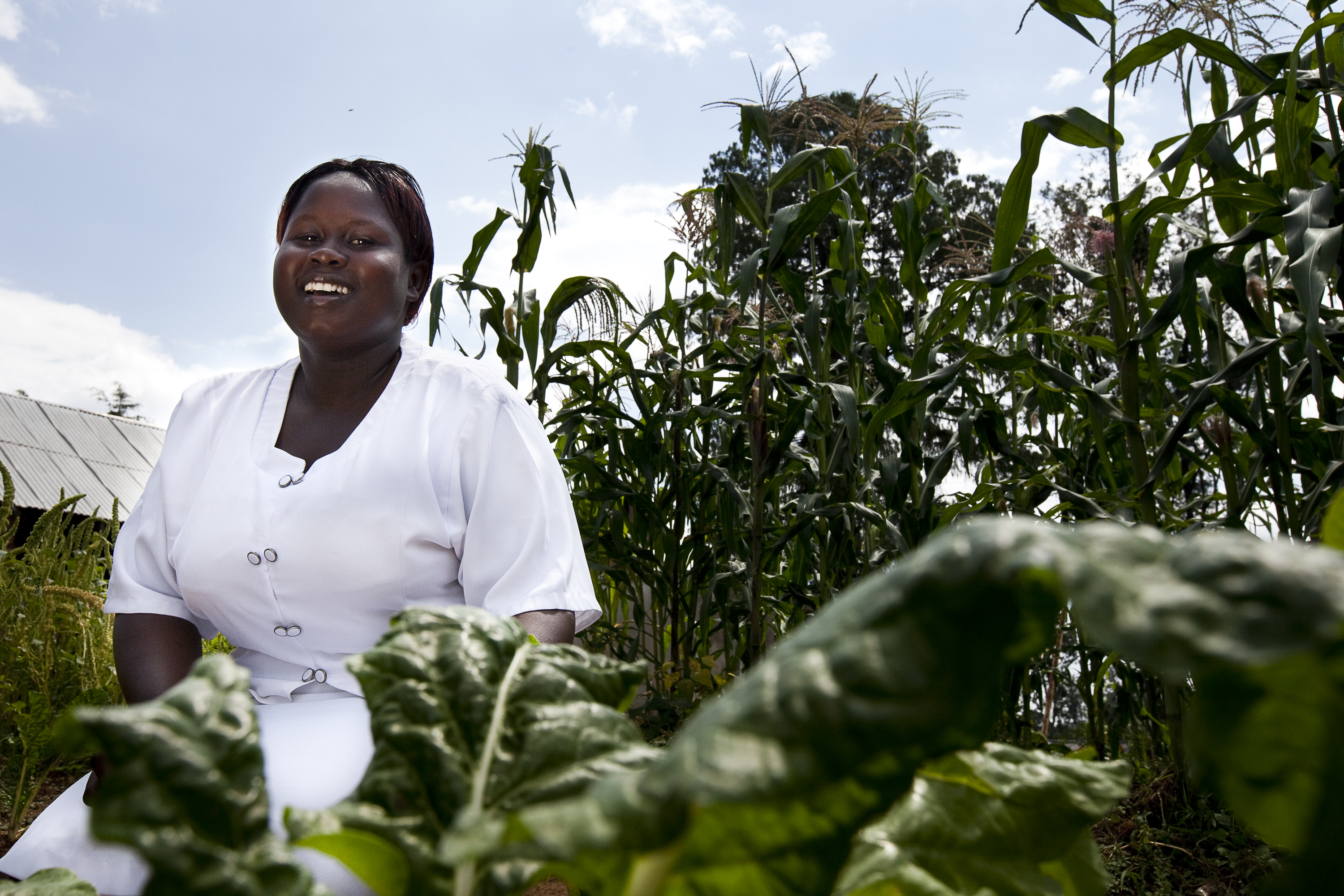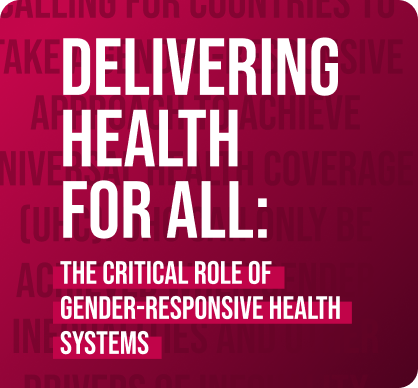A lot has changed in health care since Peter Abwao grew up in a rural village in Kenya. Back then you couldn’t use a cell phone to beckon a health worker in the middle of the night. There was no website a parent could consult about a child’s symptoms, and electricity in rural health facilities was exceedingly rare.
But much remains the same since that night in 1986 when young Peter ran through darkness to rouse Winifred, the local nurse, to tend to his baby sister. Young boys are still afraid of the dark and growling dogs. Parents everywhere still worry when an infant’s fever will not relent. And health care today, like it was back then, remains largely the domain of women.
Women in Health Care

Women carry the heaviest burden when it comes to family caretaking duties and also make up the vast majority of frontline health workers around the world. In a sample of 123 countries, women made up 67% of employment in the health and social sectors, compared with 41% of employment across all sectors. In the US, 80% of the health workforce and 90% of registered nurses, but only 40% of executives, are women. And we know that community health workers—those most likely to provide primary health care to populations most in need—are mainly women.
Women have made great strides in securing opportunities for education and employment. Health employment provides stable, remunerative careers that women (and men) can pursue while providing care to families and contributing to the physical and economic health of their communities. In fact, our health systems would collapse without women.
So are we doing enough to support them?
It is not surprising that community health workers, many of whom receive limited training and little or no pay, are largely women. And, in most cases, these roles are among the few opportunities available in the health workforce.
For many, it’s a calling. For some, it’s their only opportunity to work outside the home, participate in paid work, or earn the respect of their families and communities. We rely on the women who operate in this capacity to bring services to the most vulnerable.
But are they getting the support they need to provide the best care? Are we integrating their roles into the formal health system and ensuring fair compensation? And are the young girls in their communities able to set their sights on jobs as health workers?
Sadly, the answer is often no.
Obstacles to Health Workforce Development
Thirty-one million girls around the world are not completing their primary education. Another 32 million do not make it through lower secondary school. That’s 63 million girls removed from the potential pool of highly trained health workers.
But for those who are able to continue their studies, the obstacles pile up. Families in many countries are less likely to invest in girls’ education than boys’. Many young women drop out of health training schools because they can’t afford it or they become pregnant or they get married. Societal norms and, in many cases, draconian policies are working against them. And female students and health workers frequently face unbridled sexual harassment and discrimination.
And then there is the pay gap. Women in the health industry are routinely paid less than their male counterparts across many different roles.
High-Level Commission: Health Employment Drives Economic Growth & Gender Equality
Women currently provide the lioness’s share of primary health care services. But these services still aren’t available to all who need them, and that gap could widen if we don’t do something about it. The World Health Organization projects a shortfall of 18 million health workers that would be needed by 2030 to deliver essential health services to the more than 400 million people worldwide currently without access if we do not act.
Women are key to solving this problem. In fact, the United Nations Secretary-General’s High-Level Commission on Health Employment and Economic Growth (or HEEG Commission) recommends focusing on gender equality and rights as one of its ten leading recommendations to address the shortage and, in turn, strengthen the health workforce needed to achieve the Sustainable Development Goals.
The commission recommends countries and institutions do more to empower women and maximize their economic participation. It calls for more women in meaningful leadership roles in the health sector and for addressing gender biases and inequities in education, the health labor market, and in health reform processes. Investing in women will stoke the global economic engine that health workers have become. Research associated with the HEEG Commission report found a nine to one return on investment in health.
Women like Winifred (who still advises her community in Kenya today) are saving lives every day. On International Women’s Day, policymakers would be wise to focus on the investments and policies needed to enable the next generation of women to transform the health sector—and lives of the people in their communities.

For over 35 years in more than 100 countries, IntraHealth International has partnered with local communities to make sure health workers are present where they’re needed most, ready to do the job, connected to the technology they need, and safe to do their very best work. IntraHealth houses the secretariat of the Frontline Health Workers Coalition, an alliance of public and private United States-based organizations working together to urge greater and more strategic U.S. investment in frontline health workers in developing countries as a cost-effective way to save lives and foster a healthier, safer and more prosperous world.
Photos: IntraHealth International


